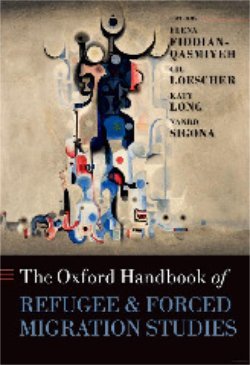Edited by Elena Fiddian-Qasmiyeh, Gil Loescher, Katy Long and Nando Sigona
This Handbook critically traces the birth and development of Refugee and Forced Migration Studies, and vividly illustrates the vibrant and engaging debates that characterize this rapidly expanding field of research and practice. The contributions highlight the key challenges faced by academics and practitioners working with and for forcibly displaced populations around the world, as well as identifying new directions for research in the field. Since emerging as a distinct field of study in the early 1980s, Refugee and Forced Migration Studies has grown from being of concern of a relatively small number of scholars and policy analysts to become a global field with thousands of students worldwide studying displacement, either from traditional disciplinary perspectives or as a core component of newer interdisciplinary programmes across the Humanities and Social and Political Sciences. Today the field encompasses both rigorous academic research as well as action-research focused on advocating in favour of refugees’ needs and rights and more directly concerned with influencing policy and practice. The Handbook’s fifty-two state-of-the-art chapters, written by leading academics, practitioners, and policymakers working in universities, research centres, think tanks, NGOs, and international organizations across every continent, provide a comprehensive and cutting-edge overview of the key intellectual, political, social, and institutional challenges arising from mass displacement in the world today.
Oxford, UK; New York: Oxford University Press, 2014. 800p.





















